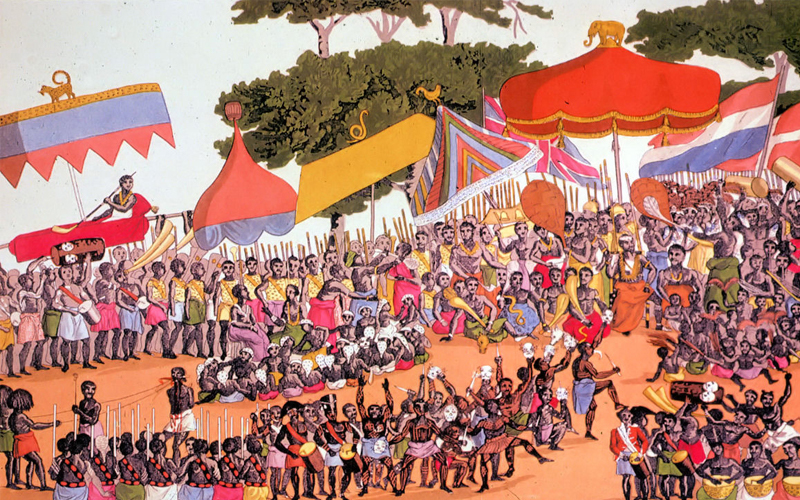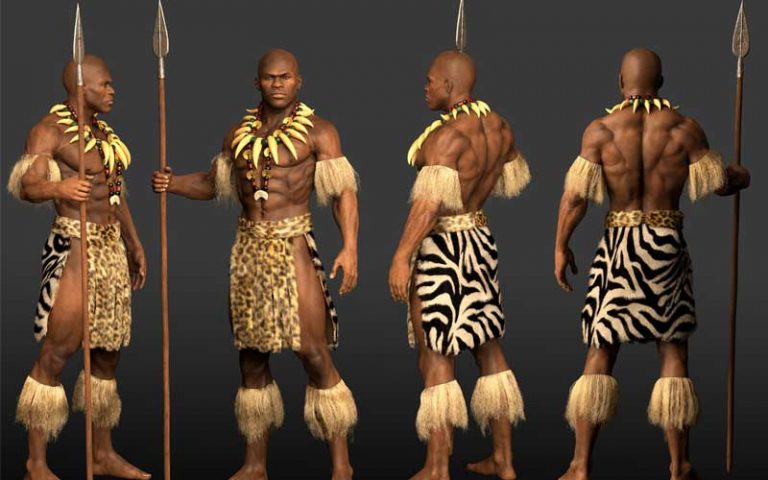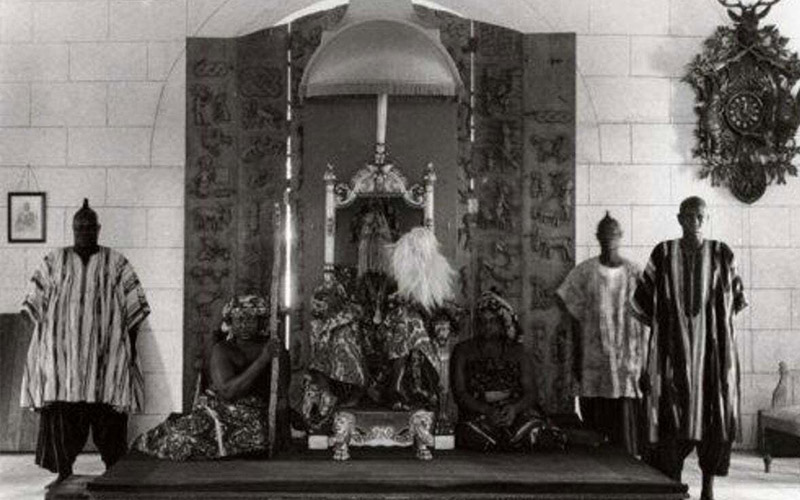
Asante – The People Of A Wealthy Gold-Rich Empire
From origin, the meaning of the name Asante is “because of war”, it derives from the Twi words ɔsa meaning “war” and nti which means “because of. “The name comes from the Asante’s origin as a kingdom created to fight the Denkyira kingdom.
However, different pronunciation of the name “Ashanti” comes from British transcribing of “Asante” being heard as ‘as-hanti’. The hyphenation was subsequently dropped and the name Ashanti remained, with various spellings including Ashantee common into the early 20th century.
Asante are the ethnic group native to the Ashanti Region of contemporary Ghana and the Twi language is spoken by over nine million ethnic Asante as a first or second language.
Between the 10th and 12th centuries AD the ethnic Akan people migrated into the forest belt of Southern Ghana and established several Akan states:
The Asante people, notable wealthy gold-rich, developed the large and influential Asante Empire, along Lake Volta and Gulf of Guinea in 1670 while Kumase was made the capital city in 1680, late 17th century, by Asantehene (emperor) Osei Kofi Tutu I on the advice of Ɔkͻmfoͻ Anͻkye, his premier.
The location of the Kumase megacity, which was strategically sited at the crossroads of the Trans-Saharan trade routes contributed immensely to its growing wealth
Throughout this period of the Kumasi metropolis’ existence, several peculiar factors have combined to transform the Kumase metropolis into a fitting financial center and political capital. The main causal factors included the unquestioning loyalty to the List of rulers of Asante monarchy and the Kumase metropolis’ growing wealth, derived in part from the capital’s lucrative domestic-trade in items such as bullion.
The Ashanti political organization at the initial stage was centered on clans headed by a paramount chief or Amanhene. Records showed that one particular clan, the Oyoko, settled in the Ashanti’s sub-tropical forest region, establishing a center at Kumasi. The Ashanti became tributaries of another Akan state, Denkyira but in the mid-17th century the Oyoko under Chief Oti Akenten started consolidating the Ashanti clans into a loose confederation against the Denkyira.
In the 1670s the Ashanti went from being a tributary state to a centralized hierarchical kingdom. Ashanti king Asantehene Osei Tutu I, military leader and head of the Oyoko clan, founded the Ashanti kingdom.
Osei Tutu obtained the support of other clan chiefs and using Kumasi as the central base, subdued surrounding states. Osei Tutu challenged and eventually defeated Denkyira in 1701, and presumptuously from this, the name Asante came to be.
Realizing the weakness of a loose confederation of Akan states, Osei Tutu strengthened centralization of the surrounding Akan groups and expanded the powers judiciary system within the centralized government. Thus, this loose confederation of small city-states grew into a kingdom or empire looking to expand its land. Newly conquered areas had the option of joining the empire or becoming tributary states. Opoku Ware I, Osei Tutu’s successor, extended the borders.
Sika dwa (the golden stool) which was a means of centralization under Osei Tutu was introduced in Ashanti Kingdom in 1935. According to legend, a meeting of all the clan heads of each of the Ashanti settlements was called just prior to declaring independence from Denkyira.
In this meeting the Golden Stool was commanded down from the heavens by Okomfo Anokye, chief-priest or sage advisor to Asantehene Osei Tutu I and floated down from the heavens into the lap of Osei Tutu I. Okomfo Anokye declared the stool to be symbolic of the new Asante Union (the Ashanti Kingdom), and allegiance was sworn to the stool and to Osei Tutu as the Asantehene. The newly declared Ashanti union subsequently waged war against and defeated Denkyira.
The stool remains sacred to the Ashanti as it is believed to contain the Sunsum — spirit or soul of the Ashanti people.
Ashanti culture celebrates Adae, Adae Kese, Akwasidae, Awukudae and Ashanti Yam festival. The Seperewa, a 10-14 stringed harp-lute, as well as the Fontomfrom drums, are two of the typifying instruments associated with the Ashanti as well as the Ashanti Kente clothing.
Ashanti are a matrilineal society where line of descent is traced through the female. Historically, this mother progeny relationship determined land rights, inheritance of property, offices and titles. It is also true that the Ashanti inherit property from the paternal side of the family.
Though not considered as important as the mother, the male interaction continues in the place of birth after marriage.
Historically, an Ashanti girl was betrothed with a golden ring called “petia” (I love you), if not in childhood, immediately after the puberty ceremony. They did not regard marriage “awade” as an important ritual event, but as a state that follows soon and normally after the puberty ritual.
The puberty rite was and is important as it signifies passage from childhood to adulthood in that chastity is encouraged before marriage. The Ashanti required that various goods be given by the boy’s family to that of the girl, not as a ‘bride price’, but to signify an agreement between the two families.


